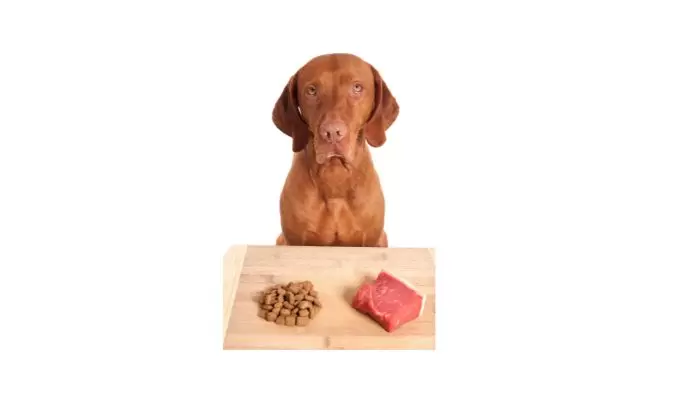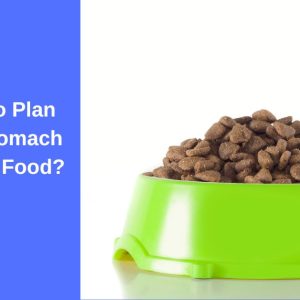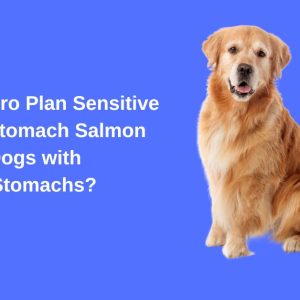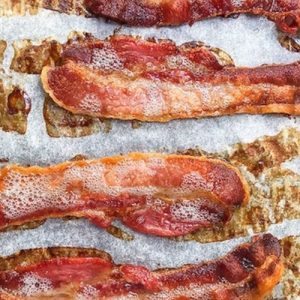Deciding what to feed your dog can be a tricky proposition. There are so many different types of dog food on the market, and it can be hard to know which one is best for your pup. If you’re considering switching your dog to dry food, or if you’re just curious about the benefits of dry food, this blog post is for you. We’ll cover everything from the pros and cons of dry food to why some vets recommend it. By the end of this post, you should have a good understanding of dry food and whether or not it’s right for your dog.

Table of Contents
The Pros and Cons of Dry Dog Food
There are many benefits to feeding your dog dry food. One of the main reasons is that dry food is more affordable than wet food. This can be helpful if you’re on a budget, or if you want to feed your dog foods that will last longer.
Additionally, dry food is lower in calories and fat, which can be beneficial for dogs who are overweight or have diabetes. Some dogs may even prefer the taste of dry food over wet food, but it’s important to talk to your veterinarian about what type of food is best for your individual dog.
One downside to feeding your dog dry food is that it can be harder to keep them hydrated if they don’t drink enough water. Additionally, some dogs may have trouble digesting dry food, which can lead to problems such as diarrhea or stomach upset.
It’s important to read the ingredients label on any type of dog food, and make sure that the food you choose contains all the essential nutrients your dog needs. If you have any questions about what type of dry food is best for your pet, please contact your veterinarian.
Why Some Vets Recommend Only Feeding Your Dog Dry Food
Some veterinarians recommend only feeding your dog dry food for several reasons. The main reason is that dry food is more nutritionally dense than wet food and it’s easier for dogs to digest. Additionally, dry food is less likely to harbor bacteria than wet food, which means it’s safer for your dog to eat.
If you’re concerned about your dog getting enough moisture, you can always add a little water to their kibble.
There are a few drawbacks to feeding your dog only dry food. For one, it can be more expensive than feeding them wet food. Additionally, if your dog isn’t getting enough water from their diet, they may become dehydrated.
In cases like this, adding water to their kibble can help them satisfy their thirst and stay hydrated. Finally, some dogs simply prefer wet food over dry food. If this is the case for your pet, providing both types of food will likely result in healthier eating habits for everyone involved.
What Are the Benefits of Feeding Your Dog Dry Food?
Dry food is more affordable than wet food. It’s also easier to store and doesn’t spoil as quickly as wet food. These are all benefits that make dry food a good option for your dog.
But there are other benefits to feeding your dog dry food that you may not be aware of. For one, dry food is easier for your dog to digest.
This is because it’s broken down into smaller pieces that the dog can easily eat. It also helps to keep your dog’s teeth clean and healthy. Feeding your dog wet food can lead to problems such as dental problems and bad breath, both of which can be a hindrance when trying to find a new home for your pet or when meeting new friends.
Dry food also promotes better weight management in dogs. Wet food is packed with calories and sugar, which can quickly add up if dieted on regularly.
By feeding your dog dry food rather than wet, you’re helping them stay slim without having to resort to weight-loss surgery or special diets like kibble fed exclusively bones (which many purebreds are still fed).
Dry Dog Food: The Good, the Bad, and the Ugly
Dry dog food is becoming more and more popular these days. There are a few reasons for this, but the main advantage is that it’s usually cheaper than wet food. Choking is less of a risk, and it can help keep teeth clean.
Another advantage of dry food is that it’s easier to store. Normally, you would have to refrigerate wet food, but with dry kibble you can just put it in a pantry or cabinet.
However, there are also some disadvantages to consider when choosing a diet for your dog. Some people argue that dry food isn’t as nutritious as wet food, and that it can be hard on a dog’s digestive system.
The verdict at the end of the day is up to you – if you’re looking for something budget-friendly or your dog doesn’t seem to have any issues with dry kibble then go ahead and choose that option. But if you want something better for them or if they seem unhappy with their current diet then there are plenty of other options out there.
There are a few different types of dry dog food on the market, and each one has its own set of benefits and drawbacks. The most popular type is kibble, which is small pieces of meat or other ingredients that have been ground up into tiny bits.
Kibble is easy to store and doesn’t require refrigeration, which makes it a good option for apartments or small homes. However, some people argue that it’s not as nutritious as wet food. Another downside to kibble is that it can be hard on a dog’s teeth if they eat too much at once.
Another type of dry food is canned food. This option is usually more expensive than kibble, but it’s also more filling since there are fewer calories per serving.
Canned food usually requires refrigeration, but this isn’t always necessary since most brands come in cans that can be opened without putting them in the fridge first. Some people find canned food to be less appetizing than kibble because of the spices used in some brands.
Finally, there’s water-only diets like raw feeding or freeze-dried options like Thrive Natural Raw Dog Food.
These diets aren’t recommended by most vet offices because they’re relatively new – research hasn’t been done yet to show whether they’re healthy or not – and they require a lot of extra work on your part (raw feeding in particular).Water-only diets tend to be cheaper than any other type of diet, but you’ll need to make sure your dog gets enough water otherwise they will get dehydrated and sick.
Is Your Dog Eating the Right Kind of Food?
There are a lot of myths surrounding the benefits and types of food that can be fed to dogs. In this blog, we will discuss some of these myths and help you to decide what is best for your dog.
One common myth is that only wet food is good for dogs. However, this isn’t always true. In fact, many people believe that dry food is just as good as wet food when it comes to feeding their dog.
There are a number of different types of dry food available on the market, such as kibble, biscuits, and rawhide bones. It’s important to find something that your dog enjoys eating so that they don’t get bored with their diet.
Another misconception about feeding dogs is that they need large amounts of meat in order to be healthy. While meat does provide essential nutrients for dogs (and cats), there are other factors that also contribute to a healthy diet for a pet canine too.
For example, certain types of vegetables and fruits can also provide important vitamins and minerals for dogs. So it’s important not only to feed your dog enough meat, but also to make sure they are getting all the necessary nutrients from their diet.
Final Thoughts
Dry food is a good option for your dog if you’re looking for something budget-friendly or your dog doesn’t seem to have any issues with it.
However, there are also some disadvantages to consider when choosing a diet for your dog, such as the fact that it’s not as nutritious as wet food and that it can be hard on a dog’s digestive system. At the end of the day, the decision of whether or not to feed your dog dry food is up to you.





